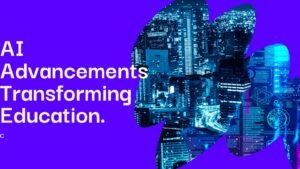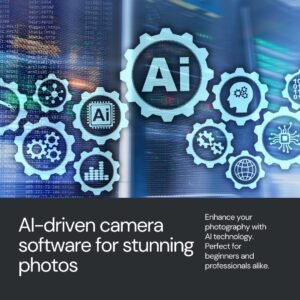
Education is at the cusp of a technological revolution, merging conventional teaching approaches with captivating digital advancements. Augmented Reality in Education leads this shift, providing an immensely immersive and tailored learning journey. Explore further the captivating ways in which AR is transforming the educational realm, highlighting its myriad advantages and the bright future it promises for learners globally.
How AR is Applied in Education
Augmented Reality, a cutting-edge technology, seamlessly integrates computer-generated images and information into our physical environment. In the realm of education, it is reshaping traditional learning methods by introducing interactive elements that transcend the limitations of conventional textbooks and classroom demonstrations. Picture students immersing themselves in real-time 3D models of the solar system, fostering a deeper understanding of astronomical concepts. Moreover, envision historical reenactments that vividly transport learners to pivotal moments of the past, allowing them to engage with history in a truly immersive and engaging manner.
Interactive Learning Environments
Augmented Reality (AR) seamlessly converts traditional learning resources into immersive 3D models, enhancing student engagement and learning outcomes. S.T.E.M. disciplines, in particular, have seen remarkable advantages from these interactive models. Students can now manipulate molecules or engage with physics simulations in ways previously limited to imagination or costly laboratory setups.
Real-World Application Simulations
One of the most significant uses of AR is to offer students simulations of real-world situations. This could include simulating building construction to grasp structural integrity or using virtual medical diagrams to replicate surgical procedures. This method enables students to practice and learn in a safe, accessible environment that closely resembles real working conditions.
Remote Learning and Collaboration
Augmented Reality (AR) is instrumental in dismantling geographical constraints, facilitating remote learning and collaboration. By leveraging AR applications and tools, students and educators can engage in real-time interactive experiences, enabling learning from experts and collaborative work with peers worldwide
Also Read Augmented Reality Frameworks
5 Benefits of Augmented Reality in Education
The rise of Augmented Reality in education isn’t just a fad; it’s underpinned by a host of tangible advantages that are reshaping learning outcomes and experiences for students. Here, we highlight five powerful benefits.
AR revolutionizes education by integrating digital information with the real world for immersive learning experiences. It enriches subjects such as science, history, and language learning through virtual interactions, making education more engaging, inclusive, and effective.Augmented Reality in Education is truly transformative!
Also Read Augmented Reality Scope and Benefits
Enhanced Understanding
The interactive nature of AR makes abstract concepts tangible, resulting in a deeper understanding and retention of information. When students can see and interact with content in a three-dimensional space, it helps bridge the gap between theory and application, fostering a more profound learning experience.
Personalized Learning Paths
AR affords the flexibility to adjust to each student’s pace and learning style. By integrating AR into the curriculum, educators can create personalized learning paths, catered to individual student needs, which is a feat no traditional teaching method can match.
Increased Engagement and Motivation
Traditional teaching methods are notorious for their inability to consistently engage students. AR’s inherently interactive and engaging nature captivates and maintains student interest, leading to higher motivation levels and, consequently, improved learning outcomes.
Accessible and Inclusive Education
For students with learning challenges, accessibility can be a significant hurdle. AR provides an inclusive and multi-sensory learning experience that accommodates different needs and learning styles, ensuring that no student is left behind.
Preparing Students for Future Careers
The adoption of Augmented Reality in education aligns with industry trends, giving students practical skills and familiarity with technologies they’ll encounter in their future careers. By utilizing AR, schools are preparing students for a workforce that increasingly demands dynamic, tech-savvy individuals.
Challenges and Limitations
While AR brings a plethora of benefits to the table, it also grapples with its unique set of challenges. As a budding technology, it faces hurdles that impede its widespread embrace in the education sector.
Infrastructure and Costs
For effective AR implementation, schools must invest in essential infrastructure such as compatible devices, strong internet connections, and potentially tailored AR content. The initial setup expenses may pose challenges, especially for institutions with constrained budgets.
Teacher Training and Support
The successful integration of AR into the classroom requires educators who are not only tech-savvy but also trained on how to leverage AR to enhance their teaching. Ongoing support for teachers as they learn to utilize AR is critical.
Content Development
The creation of AR content is complex and time-consuming. Educators and content developers must collaborate to design and develop high-quality AR experiences that align with curriculum objectives and offer educational value.
Distractions and Overstimulation
When not used judiciously, AR has the potential to overwhelm and distract students from the learning objectives. Balancing the use of AR to enhance learning without detracting from it poses a challenge for educators.
Future of Augmented Reality in Education
Despite these challenges, the future of AR in education is promising. With ongoing advancements in technology and content development, we can expect to see more affordable, inclusive, and effective AR solutions in the classroom.
Scaling AR Implementation
As the technology matures and costs decrease, we will witness a wider adoption of AR across educational institutions. This scalable implementation will allow more students to benefit from AR’s educational advantages.
Evolution of Content
The quality and quantity of AR educational content are set to improve dramatically. With more investment in content development, we will see a broader range of high-quality AR resources that cater to a variety of subjects and educational levels.
Integration with Learning Management Systems
An integrated approach to AR within existing learning management systems will streamline its use in the classroom. These systems could track student progress, provide feedback, and adapt AR content to individual student needs seamlessly.
Democratization of AR Tools
The democratization of AR tools, through open-source platforms and partnerships, will help level the educational playing field. This accessibility will be pivotal in ensuring that AR can benefit students from all backgrounds.
Conclusion
The integration of Augmented Reality in education is much more than a flashy addition to the traditional classroom; it is a transformational force that is ushering in a new era of interactive and personalized learning. Despite the challenges it currently faces, the potential of Augmented Reality in Education to enhance understanding, engage students, and bridge learning gaps cannot be overstated. As we look to the future, the key will be in ensuring that AR technology is developed and implemented thoughtfully, with a focus on its substantial benefits for students and educators. It’s clear that AR has the power to reshape the way we learn and teach, making education not only more effective but also more enjoyable and accessible to all. In doing so, AR is poised to play an integral role in molding a generation ready to innovate and excel in the world of tomorrow.
Share to
Frequently Asked Questions (FAQ)
AR can make learning more engaging and interactive, help students understand complex concepts by visualizing them, and cater to different learning styles, thereby improving retention and motivation.
Yes, AR has applications across all educational levels and various subjects. Its adaptability allows educators to create tailored learning experiences for kindergarten to post-secondary education in subjects ranging from history to advanced science.
The major challenges include the high cost of AR technology, the need for robust infrastructure to support its use, and the training required for educators to effectively integrate AR into their teaching.
Related Posts

Artificial Intelligence Algorithms
Artificial Intelligence algorithms are the backbone of modern intelligent systems, enabling machines to perform tasks that typically require human intelligence.

Innovations in AI for Education
Discover how Innovations in AI (Artificial Intelligence) is transforming education with personalized learning paths, intelligent tutoring systems, and predictive analytics for enhanced learning experiences.

Best AI Virtural Camera Software
Discover the best AI virtual camera software enhancing remote work with features like background replacement, real-time effects, and advanced facial tracking. Explore their benefits and unique selling points in our latest blog.
